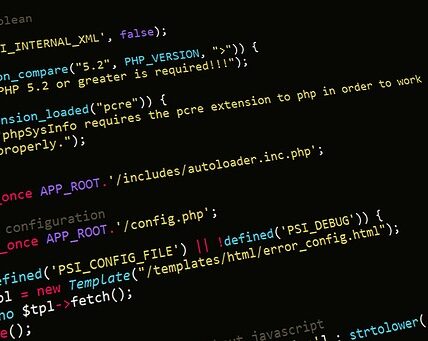The use of ReactJS in website design has gained significant traction in recent years. What factors have driven this popularity? How has ReactJS improved web development? What advantages does ReactJS provide for website designers and developers?
The ever-increasing complexity of web design and development requires developers to use tools that can keep up with the pace and intensity of modern web projects. With a need to create cutting-edge user experiences and handle diverse datasets and UI components, developers are now turning to JavaScript libraries such as ReactJS for help. Statista has reported that ReactJS is now the most popular JavaScript Library in use, signaling the wide adaptation of ReactJS for web development purposes. Meanwhile, Forbes Insights has discovered that up to 50% of developers now prefer to use ReactJS for web development projects as it provides scalable, efficient, and lightweight solutions.
In this article, you will learn more about what ReactJS is, along with its major benefits, popular applications, and how you can incorporate ReactJS in your web design projects. We will explore the different components that ReactJS offers, such as components, the state, lifecycle methods, JSX, and how to build React apps. Also, the article will discuss why ReactJS is the perfect choice for web development, and also analyze the differences between ReactJS and other popular frameworks such as Angular and Vue.
This article will also compare popular web development tools like ReactJS, Visual Studio Code, and Node.js. You will learn how easy it is to use ReactJS, why it is often considered the best choice for web development, and how to optimize your website for ReactJS.
Definitions
React.js is a popular JavaScript library developed by Facebook that is used for building user interfaces. It is built around the concept of components, which are reusable building blocks that can be combined to create complex UIs. React.js makes it easy to create dynamic and interactive applications that can run on the web or natively on mobile devices. React.js is also great for creating responsive and accessible websites that work well on both desktop and mobile devices.
Components are the building blocks of React.js applications. They are reusable pieces of code that can be easily reused and abstracted to create complex UIs. Components can be used to combine HTML, CSS, and JavaScript code into one unit that can be used across multiple projects.
JSX is a JavaScript-extended XML syntax used by React.js. It allows developers to define components in an XML-like syntax, which is then parsed and converted into standard JavaScript code. This makes it easy to define complex and interactive UIs using a combination of HTML, CSS, and JavaScript.
Virtual DOM is a React.js-specific concept that defines a virtual representation of the DOM (Document Object Model). The Virtual DOM allows for efficient updates to the actual DOM tree, as only the changes that need to be made are made. This makes web applications created using React.js more efficient, as the entire DOM tree does not have to be re-rendered on each change.
Props and State are the two main ways to pass data between React.js components. Props are immutable pieces of information passed down from parent components to their children. State is mutable information, which is stored within the component itself, and can be changed at any point in time.
Reasons to Use React JS in a Website
Reasons to Use React JS in a Website
React JS is a popular JavaScript library that is used for developing interactive user interfaces and building complex, modern front-end web applications. It offers a component-based approach, a declarative syntax, and some great features that make it the perfect choice for many development teams. Let’s take a look at some of the key reasons to use React JS in a website.
Component-Based Architecture
One of the main benefits of React JS is its component-based architecture. This allows developers to create components that can be reused throughout the website, reducing the amount of code needed to develop the entire site. This also helps to increase the scalability of a website and helps with responsiveness, making it easier for a website to run on multiple devices and browsers.
Declarative Syntax
The declarative syntax used in React JS helps developers create a clean and concise code. This helps them to efficiently write, debug, and maintain their codes with ease. Unlike other libraries, React JS does not make decisions for developers, which allows them to freely code without constant supervision.
Virtual DOM
React JS features a virtual DOM (Document Object Model). This is a special tree-like structure used by React JS to represent the state of a website. It stores user data and helps React JS to efficiently compare the page throughout its current state to the previous state in order to identify the parts of the page that have changed. This allows pages to be updated efficiently with minimal usage of resources.
React Native
React JS also offers a React Native library that helps developers to create applications for various mobile operating systems such as for iOS and Android. Unlike other mobile development frameworks, React Native requires developers to write code for each platform and allows the same code to be reused across multiple platforms. This helps to reduce development costs, making React Native a great choice for cross-platform mobile application development.
Performance
React JS is known for its excellent performance. It is able to render components quickly and efficiently, making page loading time much faster. This helps to reduce the load time of a website and improve its performance. React JS also offers great flexibility, allowing developers to create complex websites quickly and efficiently.
Easy to Learn
Last but not least, React JS is easy to learn and use compared to other frameworks. It requires minimal setup and offers great flexibility, allowing developers to quickly build and deploy their websites. Moreover, the React community is huge and offers myriad of resources to help developers with their projects.
Conclusion
In conclusion, React JS is a powerful, efficient library that offers many benefits. Its component-based architecture, declarative syntax, virtual DOM, React Native, performance, and ease of use makes it a great choice for development teams. This makes an excellent choice for developing modern and interactive websites for businesses and organizations.
- Component-Based Architecture
- Declarative Syntax
- Virtual DOM
- React Native
- Performance
- Easy to Learn
Understand React Components and Libraries
React is a powerful JavaScript library that is used to create user interfaces for websites and applications. React enables developers to quickly build complex and interactive web applications by utilizing components with minimal coding. This makes React an excellent choice for web development projects.
The Advantages of Using React
React offers several advantages for web development. It is well known for its flexibility and scalability, allowing developers to construct modular, highly-customized UI components and websites. Its Virtual DOM is also an appealing feature for developers as it ensures that the UI is updated only when it is absolutely necessary, thus speeding up web development. React works on both the client and server-side, allowing developers to quickly create high-performing and well-structured applications.
Create App-like Interfaces
When creating a website, developers can use React to build web pages with a smooth and app-like UI. This is because React components are designed to function independently, allowing developers to quickly design interfaces without having to code individual components from scratch. React also supports interactive elements, such as menus, buttons and slideshows that provide a more immersive user experience.
Create Reusable UI components
Using React, developers can create reusable components that can be used across multiple web pages. Components built in React are flexible and can be updated easily. This makes it easier for developers to make changes without having to rewrite or duplicate code. Additionally, by utilizing component-based architectures, developers can create code that is easier to maintain and can also be shared across different projects.
Integrating with Other Libraries
React is compatible with a variety of libraries, frameworks and technologies. This allows developers to easily integrate React components into existing web projects, allowing them to benefit from features like web workers, web sockets, and AJAX. This makes it easy for developers to develop interactive web applications with minimal effort.
Conclusion
React is an excellent choice for web developers as it provides many advantages for creating websites and applications. It is easy to learn and is highly scalable, making it a great choice for web projects. Additionally, it is compatible with a variety of libraries and technologies, allowing developers to easily integrate their code with existing projects.
React’s Benefits to Building Your Website
In today’s fast-paced digital world, web developers and business owners are always looking for the most efficient and effective way to create their online presence. ReactJS is becoming one of the most popular JavaScript frameworks, providing web developers with the tools they need to develop powerful, user-friendly, and dynamic web applications. ReactJS is used by many high profile companies such as Facebook, Netflix, Yahoo, and Instagram, and more everyday businesses are implementing it into their websites.
Faster Development
One of the greatest benefits of ReactJS is that it makes web development faster and easier. ReactJS offers a modular structure, which allows developers to create separate components that can be easily reused for future projects. This saves developers the time and effort of having to recreate the wheel.
ReactJS also uses a virtual DOM (Document Object Model) to render the page, updating only the parts of the page that have actually changed. This helps make the web page as efficient and responsive as possible. Virtual DOM also allows developers to write code in quick cycles, including testing, debugging, and debugging. This makes the development process more efficient, allowing developers to focus more on the design and performance of the website.
Ease of Use
ReactJS is also known for its user-friendly structure. Its syntax is clear and concise, making it easier for developers with any level of experience to understand and use the code. This makes onboarding new developers a breeze, and also makes updating existing code easier.
Because ReactJS is written in JavaScript, there is no need to learn a new language or framework. It also has a wide range of tools available, such as debugging tools, allowing developers to see the code running in real time and make changes as needed. This makes detecting and addressing potential problems much simpler than with other frameworks.
In addition, ReactJS also offers support for server-side and mobile web applications, allowing developers the same efficiencies and user-friendly interface regardless of the platform. This makes ReactJS the ideal way to create a website that is both modern and intuitive.
ReactJS is becoming one of the most popular javascript frameworks, providing web developers with the tools they need to create powerful, user-friendly, and dynamic web applications. With features such as faster development, ease of use, and support for multiple platforms, businesses and developers are turning to ReactJS more than ever for their web development needs.
Conclusion
ReactJS is becoming increasingly popular among web developers due to its flexibility and performance. It can be used to create dynamic web applications that respond quickly and effectively. But how far can this technology take us? How can we best use ReactJS in our web projects to make them stand out and remain fresh?
Given the continuous innovation in the tech industry, it can be difficult to keep up with all of the new developments. To ensure that you’re always up to date on the latest best practices, we encourage readers to follow our blog closely and look out for new releases. Staying ahead of the curve can make all the difference when it comes to your web development projects.
To make sure that no stone is left unturned, here’s a brief FAQ section to answer some of the most common questions about ReactJS.
What is ReactJS? ReactJS is a JavaScript library used to create interactive user interfaces. It has an interface that is easy to understand and purposeful, allowing developers to build UIs with only a few lines of code.
What advantages does ReactJS bring? ReactJS brings several advantages to the development process, including improved code and increased performance. It also has several tutorials, which makes ReactJS easier for new developers to get started with.
How secure is ReactJS? ReactJS is built on the foundations of a secure development environment, and it is designed with security in mind. It also offers high scalability, providing a reliable platform for the development of secure web applications.
What other libraries work in conjunction with ReactJS? ReactJS can be used in conjunction with a range of JavaScript libraries, including Redux, MobX, and AngularJS. This flexibility allows developers to create applications with layers of complex features.
Can I use ReactJS with other technologies? Yes, ReactJS can easily be integrated with other technologies, such as HTML and CSS, which makes developing cross-platform applications easy. There are also a number of popular frameworks, such as React Native, that allow developers to use ReactJS to build native mobile applications.




